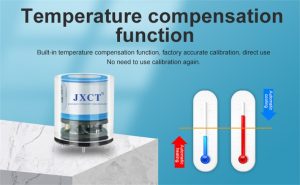Indoor air quality (IAQ) significantly impacts our health and well-being. With the increase in indoor pollution sources, such as chemicals, building materials, and household products, monitoring and improving IAQ has become crucial. Gas sensors have emerged as powerful tools in enhancing IAQ monitoring, providing real-time data on various pollutants. This article explores the importance of gas sensors in monitoring IAQ and how they contribute to creating healthier living environments.

Understanding Indoor Air Quality:
Indoor air quality refers to the level of pollutants present in the air inside buildings or enclosed spaces. Common indoor air pollutants include volatile organic compounds (VOCs), carbon monoxide (CO), nitrogen dioxide (NO2), formaldehyde, and particulate matter. Prolonged exposure to these pollutants can lead to respiratory problems, allergies, asthma, and other health issues.
The Role of Gas Sensors in IAQ Monitoring:
Gas sensors are devices that detect and measure specific gases present in the environment. They help in continuously monitoring pollutant levels, enabling timely actions to improve IAQ. Gas sensors can be designed to detect a wide range of gases, including VOCs, CO, NO2, and other harmful substances. By providing real-time data on pollutant concentrations, gas sensors play a critical role in assessing and managing IAQ.
Real-Time Monitoring and Early Detection:
Gas sensors provide real-time monitoring of pollutant levels, allowing for early detection of elevated concentrations. This timely information enables occupants to take immediate actions, such as adjusting ventilation, removing pollution sources, or implementing air purification systems. By detecting high pollutant levels early on, gas sensors help prevent adverse health effects and allow for prompt remediation strategies.
Identifying Specific Pollutants:
Gas sensors can be designed to target specific pollutants, providing accurate measurements and identification. For example, VOC sensors can detect harmful chemicals emitted from cleaning products, paints, and furniture. CO sensors can alert occupants to potentially dangerous levels of carbon monoxide, which can be released from faulty gas appliances or improperly ventilated fireplaces. By identifying specific pollutants, gas sensors enable targeted remediation efforts for improved IAQ.
Integration with Smart Building Systems:
Gas sensors can be integrated into smart building systems, enabling automated responses to IAQ issues. When pollutant levels exceed certain thresholds, the sensors can trigger actions like adjusting ventilation rates, activating air purifiers, or sending notifications to building operators. This integration ensures proactive management of IAQ, creating healthier and more comfortable indoor environments.
Data Analysis and Trend Monitoring:
Gas sensors generate valuable data on pollutant levels over time. This data can be analyzed to identify trends, patterns, and potential sources of pollution. By tracking IAQ parameters, such as temperature, humidity, and pollutant concentrations, gas sensors help in identifying areas that require improved ventilation, changes in building materials, or modifications in occupant activities. Continuous monitoring and analysis contribute to sustained IAQ improvements.
Empowering Occupants to Make Informed Choices:
Gas sensors empower building occupants by providing them with information about the air they breathe. Real-time feedback on IAQ encourages individuals to take proactive steps towards healthier living. Occupants can modify their behaviors, limit the use of certain products, and promote good ventilation practices. Gas sensors create awareness and enable informed choices that contribute to long-term well-being.

Ensuring Safe Work Environments:
Gas sensors are crucial in occupational settings, where workers may be exposed to hazardous gases. Industries such as manufacturing, construction, and laboratories benefit from gas sensors to monitor and manage workplace air quality effectively. Early detection of gases like hydrogen sulfide or ammonia helps prevent accidents, safeguard worker health, and comply with safety regulations.
Conclusion:
Enhancing indoor air quality monitoring with gas sensors is a pivotal step towards promoting healthier living environments. These sensors provide real-time data, enable early detection of pollutants, and empower occupants to make informed choices. Integration with smart building systems ensures automated responses, while data analysis allows for trend monitoring and targeted interventions. Gas sensors contribute to creating safe and comfortable indoor spaces, protecting our health, and improving overall well-being. As we prioritize IAQ, gas sensors will continue to play a crucial role in ensuring healthier lives for current and future generations.
 : +86 155 8830 2704
: +86 155 8830 2704 : jxdziot@gmail.com
: jxdziot@gmail.com
